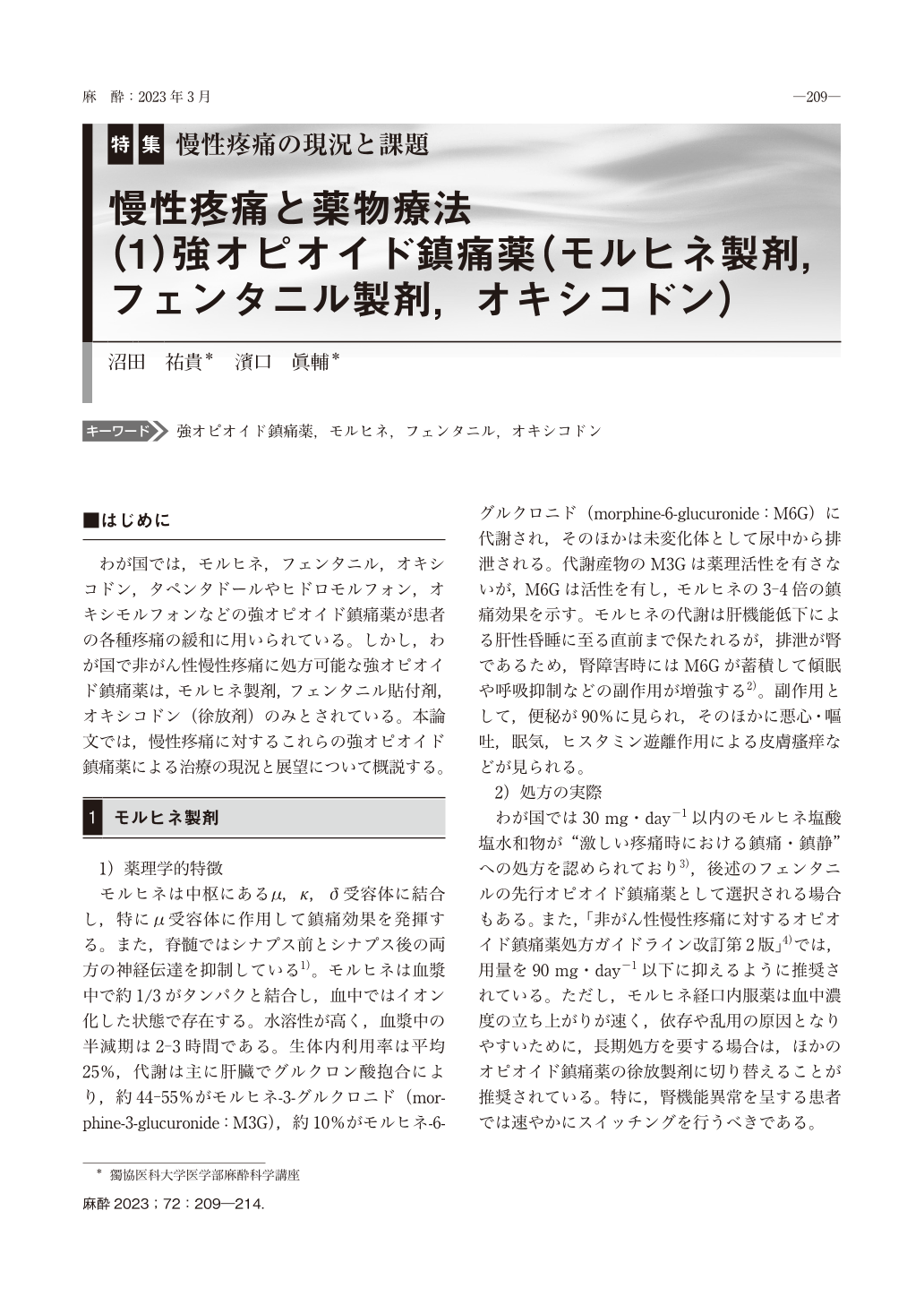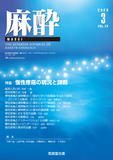Japanese
English
- 有料閲覧
- Abstract 文献概要
- 1ページ目 Look Inside
- 参考文献 Reference
はじめに
わが国では,モルヒネ,フェンタニル,オキシコドン,タペンタドールやヒドロモルフォン,オキシモルフォンなどの強オピオイド鎮痛薬が患者の各種疼痛の緩和に用いられている。しかし,わが国で非がん性慢性疼痛に処方可能な強オピオイド鎮痛薬は,モルヒネ製剤,フェンタニル貼付剤,オキシコドン(徐放剤)のみとされている。本論文では,慢性疼痛に対するこれらの強オピオイド鎮痛薬による治療の現況と展望について概説する。
In Japan, morphine, fentanyl patches, and oxycodone are available as strong opioid analgesics to relieve chronic pain. Morphine exerts analgesic effect by acting on μ receptors in the central nervous system, and inhibits synaptic neurotransmission in the spinal cord. However, when long-term prescription is required, it is recommended to switch from morphine to other extended-release opioid analgesics. Fentanyl, a synthetic opioid, has a high selectivity for μ1 receptors, with analgesic potency 50-100 times that of morphine, and has the blocking action of Na channel. As a precaution in using fentanyl patches, attention is given to increased absorption due to an increase in skin temperature at the application site. Oxycodone, a semi-synthetic opioid analgesic, exerts its analgesic effect by acting on μ and κ receptors and by inhibiting Na channel. Compared to morphine, it is less likely to cause an increase in blood concentration and delayed excretion of active metabolites in the elderly and patients with renal or hepatic disorders. Various guidelines suggest that the treatment of chronic pain with strong opioid analgesics is effective in the short term, but should be avoided because its long-term administration increases adverse events. It will be necessary to develop a useful patient screening and monitoring method.

Copyright © 2023 KOKUSEIDO CO., LTD. All Rights Reserved.


